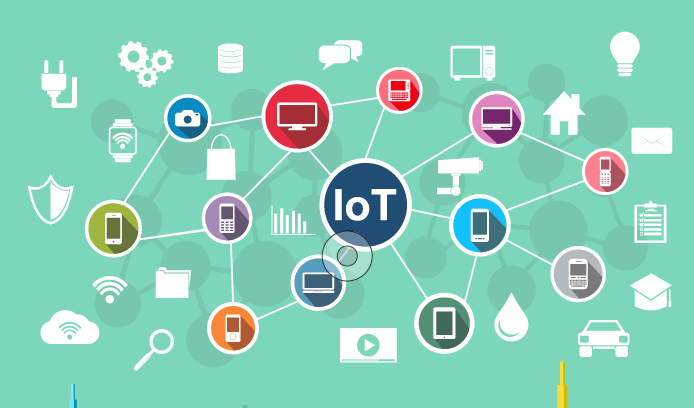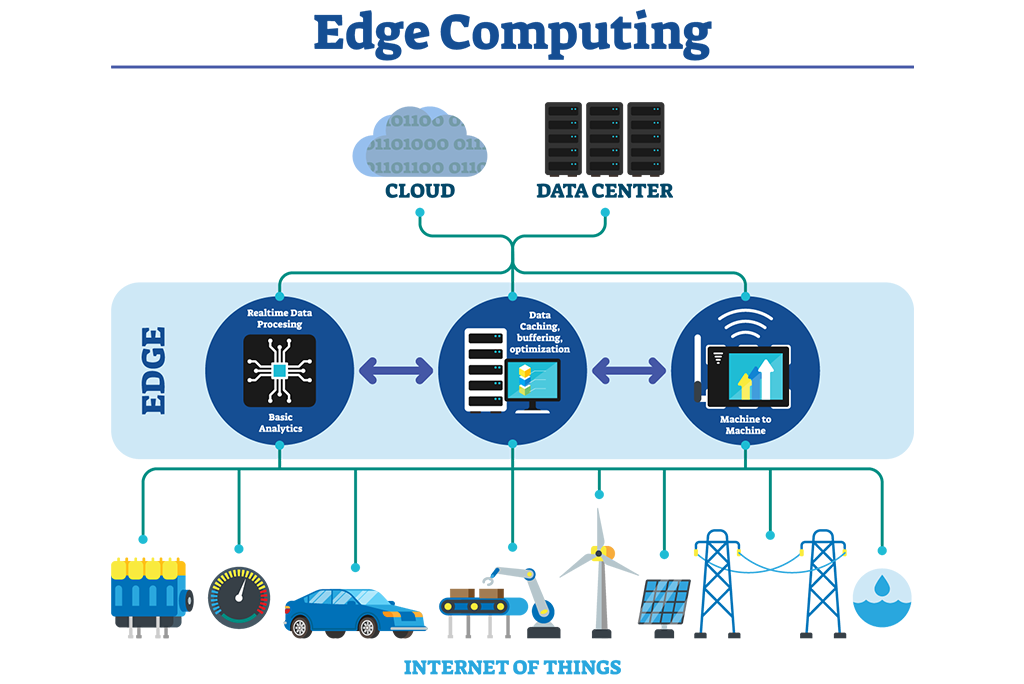Internet of Things
We in our day to day life, would have certainly encountered the term “Internet of things” more than once. So, what is it exactly? In simple terms, IoT is the collection of millions of devices all around the world that collect data and share data through a network.

With the new technologies related to networking, with fast internet available to a large population of the world and with the availability of chips which are cheap, one could convert a device into a smart device no matter how small or how large it maybe. The Internet of Things is transforming the everyday physical objects that will enrich our lives. From hairbrushes to scales, consumer and industrial devices are having chips inserted into them to collect and communicate data. The Internet ofThings (IoT) is actively shaping both the industrial and consumer worlds. Smart technology is finding its way to every business and consumer domain there is, from retail to healthcare, from finances to logistics. And a missed opportunity strategically employed by a competitor can easily qualify as a long-term failure for companies who don’t innovate.
In more technical terms, the Internet of things is a system of interrelated computing devices, mechanical and digital machines provided with unique identifiers and the ability to transfer data over a network without requiring human-to-human or human-to-computer interaction.
Some interesting numbers about IoT are that by 2020, the Internet of Things (IoT) is predicted to generate an additional $344B in revenues, as well as to drive $177B in cost reductions. Business Insider predicts that there will be 41 billion IoT devices by 2027. Autonomous cars are the future and it is predicted that more than 70% of the worlds cars will be connected to the internet.
This whole concept of Internet of things is not new as it is has been around for a few years now. So let’s see what the relevance of Internet of things is, at the present time i.e the year 2020
Trends and Relevance of IoT in 2020:
- Smart Homes: A surprising fact is that, people who first discarded the technology of smart homes, are now actually consider it as a blessing because of the ease and comfort it provides. They also ensure your individual safety and the safety of your family too. IoT home devices have become very popular in 2020 that it is the biggest trend of IoT. With the application of advanced technologies voice-recognition algorithms now work with more accuracy providing innovative solutions and greater assistance to users. Also, these devices fitted with the smart voice user interface are available at considerably cheap prices; due to the competition in this segment all the big players are pricing their products competitively.
- Smart Cities to Become Mainstream: Cities are the core centres of our society, where more than 50% of the world population resides. The integration of IoT with receptive cities will bring alluring benefits for all. We are witnessing new IoT trends where smart cities with a well-planned vision will invest in facilitating exchange of data between public & private organizations together with citizens. It paves a path for sustainable development, and also ensures decreased traffic and improved security within the city. The pioneering cities are showing how much value the IoT is generating so that the other cities are following their example which makes smart cities a mainstream thing in 2020.
- Block chain integration: What is Blockchain Technology? Blockchain is a technology using which an individual or a company can make instant transactions on a network without the need of any middlemen. Just like how a bank works. The strong codes used in Blockchain make sure that no record of the transaction can be altered thus making it completely secured. A concern with IoT over the years was with security of it. The centralized architecture of IoT makes it more vulnerable to cyber-attacks; with the billions of devices already connected and new devices being connected, complex safety challenges come up, security has become extremely important. Now with developments in block chain technology it offers new hope for IoT security. Since blockchain is public, everyone participating in the network of nodes of the blockchain network can see the blocks and the transactions stored and approves them, although users can still have private keys to control transactions. Also, blockchain is decentralized, so there is no single authority that can approve the transactions eliminating Single Point of Failure (SPOF) weakness. And most importantly, it’s secure, the database can only be extended and previous records cannot be changed. In the coming years, manufacturers will recognize the benefits of having blockchain technology embedded in all devices and a label like “Blockchain Certified” could become a standard.
- Edge Computing: Edge computing is a technology that distributes the load of processing and moves it towards the edge of the network (devices or sensors in the case of IoT). The benefits of this technology are very attractive to IoT solution providers. These benefits are minimizing latency, operating reliably with quick decisions due to the increased computing power of the devices to process data collected on the edge, conserve network bandwidth, collect and secure a wide range of data, and in turn a reduction in costs. And in many cases, it ensures a greater compliance with privacy regulations. The adoption of edge computing has been on the rise over the past few years, but the growing popularity of IoT technology will further enhance this. Mainly because affordable and powerful edge devices are becoming easily available. Edge computing also enhances the proposition of on-device AI, because edge computing allows companies to leverage real time datasets instead of having to go through terabytes of data in a centralized cloud in realtime. Over the coming years it is likely that the technology would shift to a balance between cloud and distributed, edge devices. The hardware designers are working on making more rugged and secure edge devices, and the security vendors will start to offer endpoint solutions to prevent data loss, and provide more importance to network health and threat protection, include privileged user control. All these factors will boost the speed of adoption of Edge computing by businesses.

- Software as a Service (SaaS): Software as a Service is gradually becoming the norm in the IoT world. SaaS is a service model where the service provider hosts the required application and makes it available to customers to use over the internet. This helps firms to outsource IT software applications. Such IoT trends render a marketing platform to companies for promoting their product. With lower investments in the IT gaming sector, SaaS has become their preferred choice. Edge Computing will see greater adoption by the consumers in the year 2020. Industries will be seen choosing it too. Earlier, IoT devices were based on the cloud to store the data. But now, instead of sending the whole data from the IoT device to the cloud, the data is first transferred to a local device that is located closer to the IoT device or at the edge of the network.
- Data Analysis: With the increased adoption of IoT solutions it results in increased data collection and transmission of all types of data. Managing and analysing this data represents the real added value that IoT can bring. Data analysis, Machine Learning and Artificial Intelligence will therefore play an increasingly important and decisive role. The data generated from IoT devices turns out to be of value only if it gets subjected to analysis, which brings data analytics into the picture.
Conclusion
These are some of the trends that will be dominating the IoT ecosystem in the year 2020. According to industry experts, both the consumers and the industries will witness great advances in devices thus improving the quality of life of people. bringing a great difference in the lives of people. With the latest technologies available in the market, IoT devices will become more intuitive and convenient to use.
Also, more availability of options brings more data at risk. So, new design strategies for protecting the connected devices against malicious attacks and activities. In the midst of all these IoT trends and developments, the future is definitely promising and something to look forward to.

